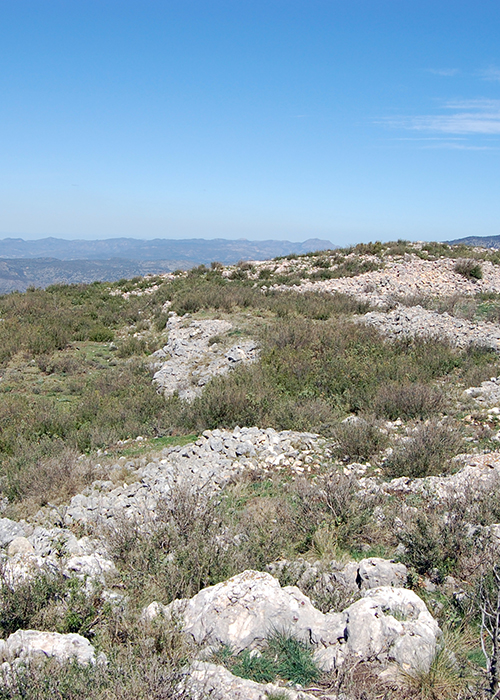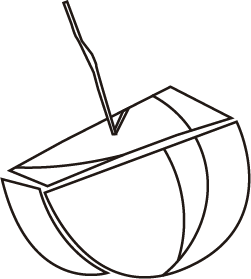THE IBERIAN SITE
 Xarpolar is a site from the Iberian period, located at the western end of the Sierra Foradada, 900 metres above sea level. It was discovered in 1928 by Ferran Ponsell.
Xarpolar is a site from the Iberian period, located at the western end of the Sierra Foradada, 900 metres above sea level. It was discovered in 1928 by Ferran Ponsell.
There are remains of a double enclosure of walls that surrounded and defended the village. The floors of some living quarters and other structures of uncertain interpretation can also be identified.
According to the archaeological materials found there, experts place the chronology of the village between the 6th and 1st centuries BC. The pottery that appeared during the excavations is from the Iberian period and certain items stand out, such as the fragments with geometric decoration and the figures made with the same style as the ones from the village of Sant Miquel de Llíria. Greek pottery with red figures and black varnish and Western Phoenician amphorae were also found, which place the town in the 6th century BC.
The objects unearthed were deposited in the Museum of Prehistory of Valencia and in the Municipal Archaeological Museum Camil Visedo Moltó of Alcoy. In addition to the aforementioned ceramics, the following artefacts are also of great interest: an entire falcata, a lock key, fibulae, a spindle whorl, needles, weights, millstones, iron agricultural tools and coins from the Iberian period and from the Roman Republic.
Bibliography:
CASTELLÓ, J.; ESPÍ, I. (2000): El Xarpolar (Planes de la Baronia, Vall d’Alcalà), Catàleg del Museu Arqueològic Municipal Camil Visedo Moltó, Alcoi, pp. 113-116.
GRAU MIRA, I; AMORÓS LÓPEZ, I : Secuencia de ocupación y análisis territorial del poblado ibérico de El Xarpolar (Vall d’Alcalà, Alacant), Archivo de Prehistoria Levantina 30, pp. 239-261.




